Submitted by WA Contents
CTBUH's annual report shows that 2018 Maintains the Skyscraper Construction Boom
United States Architecture News - Dec 20, 2018 - 00:58 15464 views

The Council on Tall Buildings and Urban Habitat (CTBUH) has released its annual report for the 2018 and the report shows that 2018 maintains the skyscraper construction boom, as China has maintained its reign once more with 88 tall buildings completions in 2018.
Released every year by the CTBUH, the report - entitled "Tall Building Year in Review" is published as part of the Tall Buildings in Numbers data analysis series.
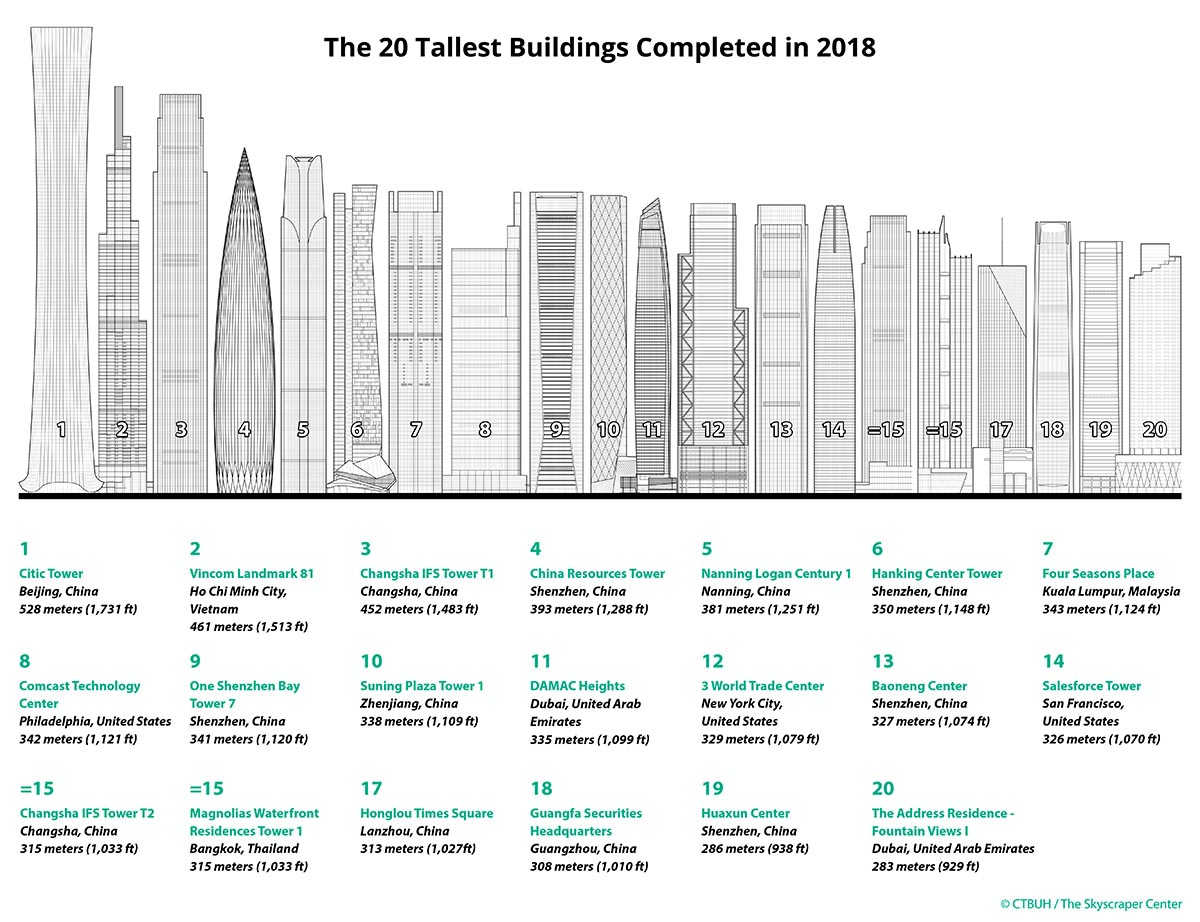
Image © CTBUH / The Skyscraper Center
Documented with a series of interactive graphics, images and in-depth analyses, for the 2018 the report shows that 143 buildings of 200 meters’ height or greater were completed in 2018, including 18 "supertall" buildings of at least 300 meters’ height, a new record.
The total number of supertall buildings worldwide is now 144. In 2013, there were 76 buildings 300 meters or higher worldwide; in 2000, only 26. The 528-meter CITIC Tower in Beijing was the tallest building completed in 2018.

2nd tallest skyscraper: Vincom Landmark 81, Ho Chi Minh City, Vietnam (Height: 461.2 m / 1,513 ft). Image courteys of vinpearl.com
"China has maintained its reign as the most prolific country when it comes to the construction of tall buildings, with 88 completions in 2018, for 61.5 percent of the total," stated CTBUH.
"This is a record for China, exceedslast year’s figure by eight, and represents an even greater proportion of the global total than the 2017 figure of 54.4 percent."
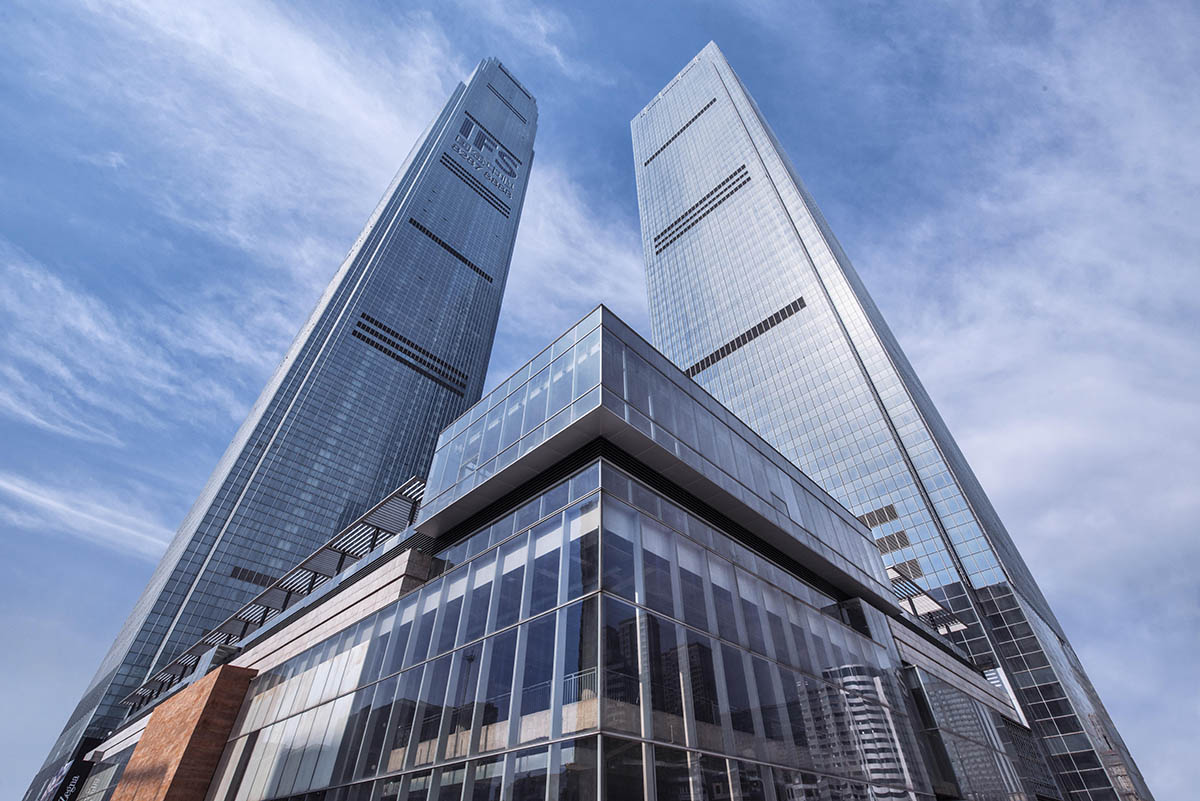
3rd tallest skyscraper: Changsha IFS Tower T1, Changsha, China (452.1 m / 1,483 ft). Image © Wong Tung & Partners
China’s previous record was set in 2016, with 86 buildings of 200 meters orhigher. Second place was again held by the United States, with 13 completions, up from 10 in 2017. And once again, outdoing its own record from last year, Shenzhen, China, recorded 14 completions, making this the third year in a row in which the city accounted for the world’s largest number of 200-meter-plus completions, and comprising nearly 10 percent of the global total.
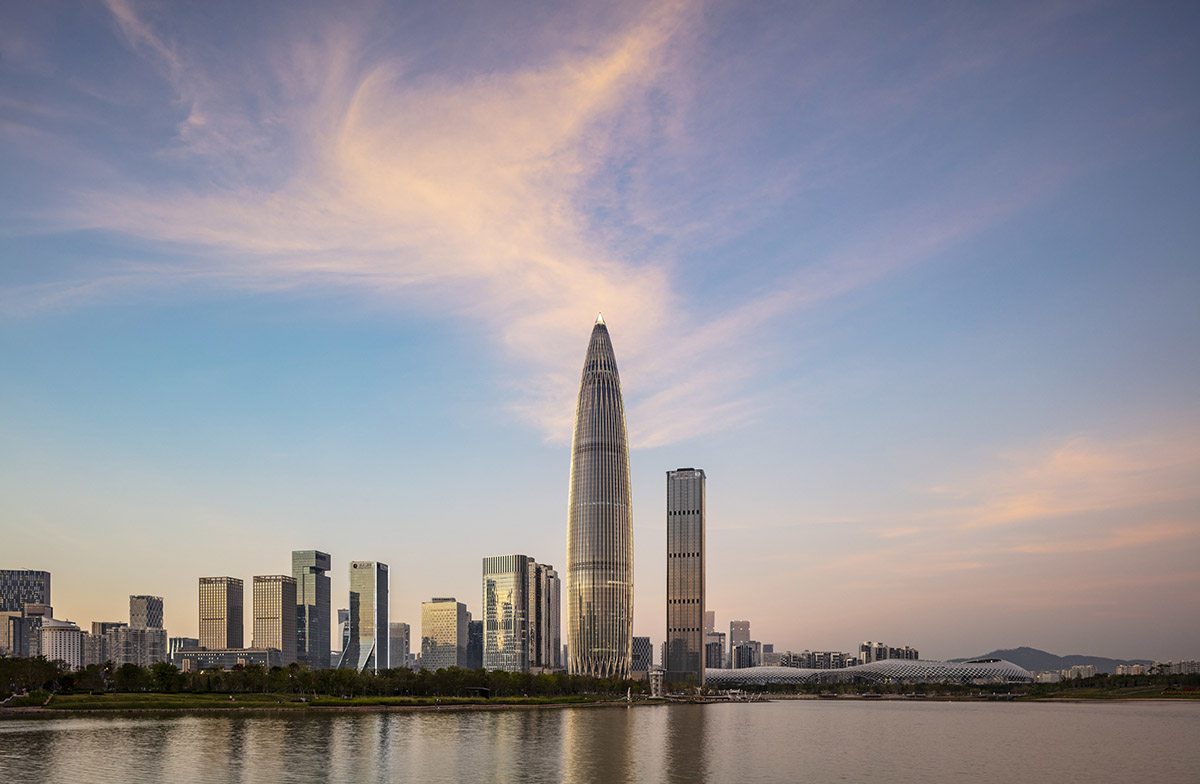
4th tallest skyscraper: China Resources Headquarters, Shenzhen, China (392.5 m / 1,288 ft). Image © Tim Griffith
"Given the rate of urbanization seen in the world - and that we must build the equivalent of a new city of 1 million people every week to accommodate this growth - it is not surprising that the pace of tall building construction continues," said CTBUH Chief Executive Officer Antony Wood.
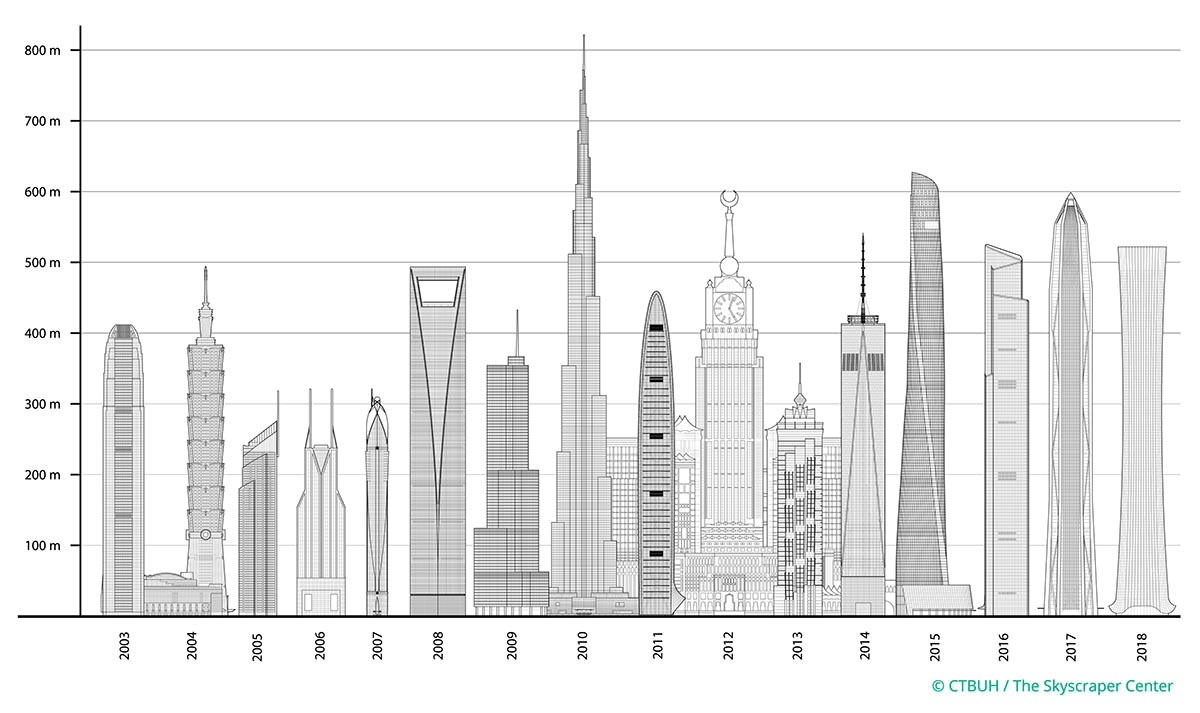
Image © CTBUH / The Skyscraper Center
Other dominant characteristics of the 200-meter-plus set included the office function (42 percent), and concrete as the main structural material (62.9 percent).
The average height of 200-meter-plus buildings completed in 2018 was 247 meters, a slight increase over the 244-meter figure for 2017. The averageheight of the World’s 100 Tallest Buildings grew to 381 meters.
CTBUH examines buildings 200 meters and higher due to the completeness of available data for buildings in this category.

Image © CTBUH / The Skyscraper Center
Another standout achievement was for Bangkok, which recorded three completions, including the city’s and Thailand’s new tallest building, Magnolias Waterfront Residences Tower 1, at 315 meters, just edging past the incumbent 314-meter King Power MahaNakhon.
Breaking the 400-meter mark for the first time, Vietnam recorded the completion of Vincom Landmark 81 in Ho Chi Minh City, a 461-meter building, which ranks as the second-tallest building to complete worldwide in 2018.
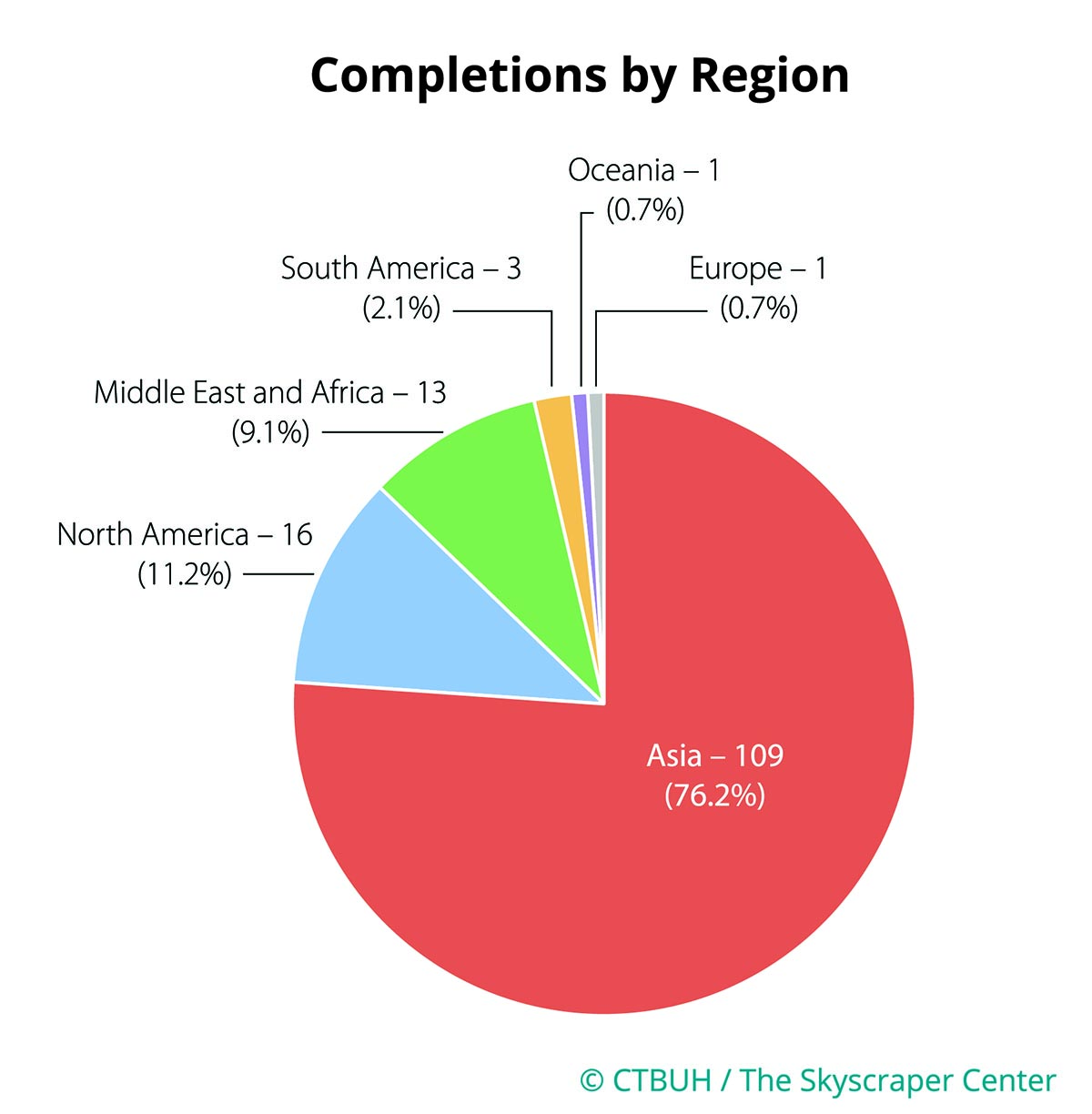
Buildings 200 meters or taller completed in 2018 by region. Image © CTBUH / The Skyscraper Center
A total of 19 cities worldwide got a new tallest building, all but five of which were in Asia. The new heights being reached in Southeast Asia are likely indicative of improving economic conditions in countries such as Thailand, Cambodia and Vietnam, which are experiencing growth in industrial production, foreign direct investment, and tourism, among other inputs.
"Any discussion of business or industry in 2018 would have to consider the role of China, the world’s second-largest economy, which is undergoing changes under the leadership of President Xi Jinping," said CTBUH.
"Bearing in mind that skyscrapers are lagging economic indicators that take years to plan, design and construct, the effects of decisions made now will not substantially affect skyscraper completion rates for several years. Although 2018 was a banner year for skyscraper projects in the country, it is likely that coming years will register the effects of increased financial controls and more conservative debt financing policies."
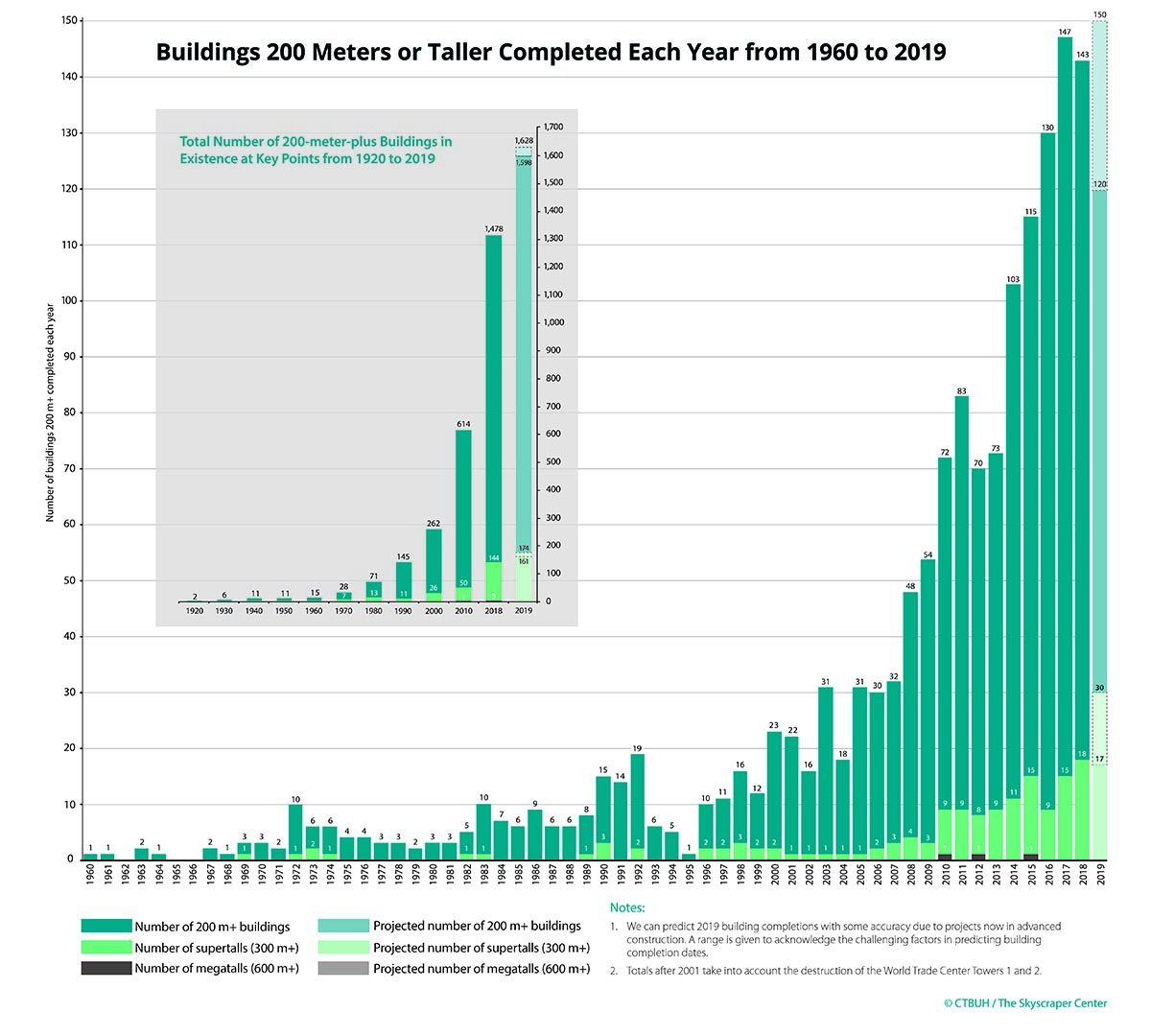
Number of 200-meter-plus buildings completed each year from 1960 to 2018, with projections through 2019. Image © CTBUH / The Skyscraper Center
Future Projections for 2019
CTBUH also showed its future projections for 2019 in the report. They stated that CTBUH expects between 120 and 150 buildings of 200 meters’ or greater height to complete in 2019. This range takes into consideration the total number of projects currently underway, but it is common for a substantial percentage of projects anticipated for completion in a given year to be delayed into the next year or later. More infrequently, some projects finish in advance of their projected schedules.
"We must also acknowledge the increasing economic and political volatility in many places around the world. Our increasingly interconnected, global industry means that disruptions to planning, design and construction of tall building projects could occur unexpectedly," CTBUH added.
Top image: Figure 2. Tallest in 2018: Citic Tower, Beijing, 528 meters. Image © CITIC Heye Investment
> via CTBUH
